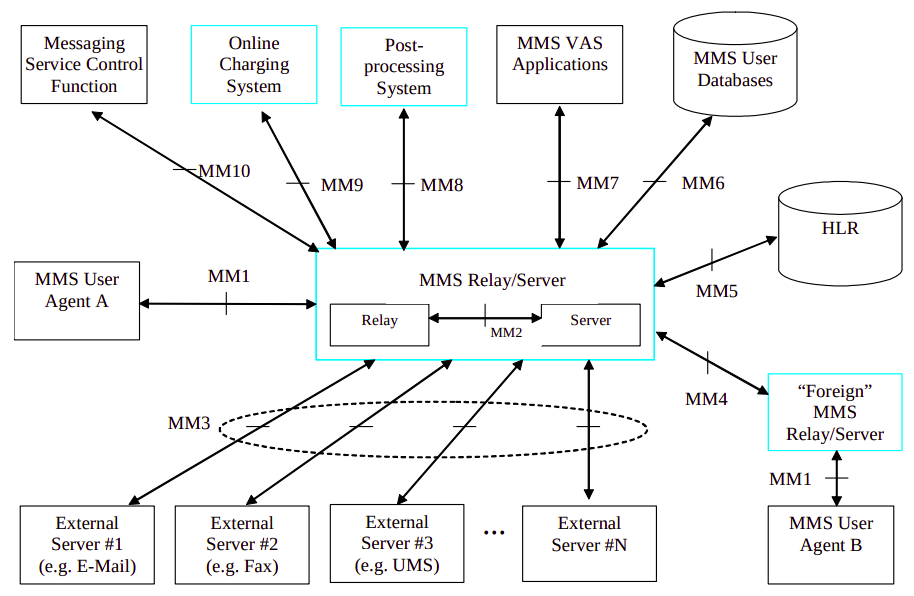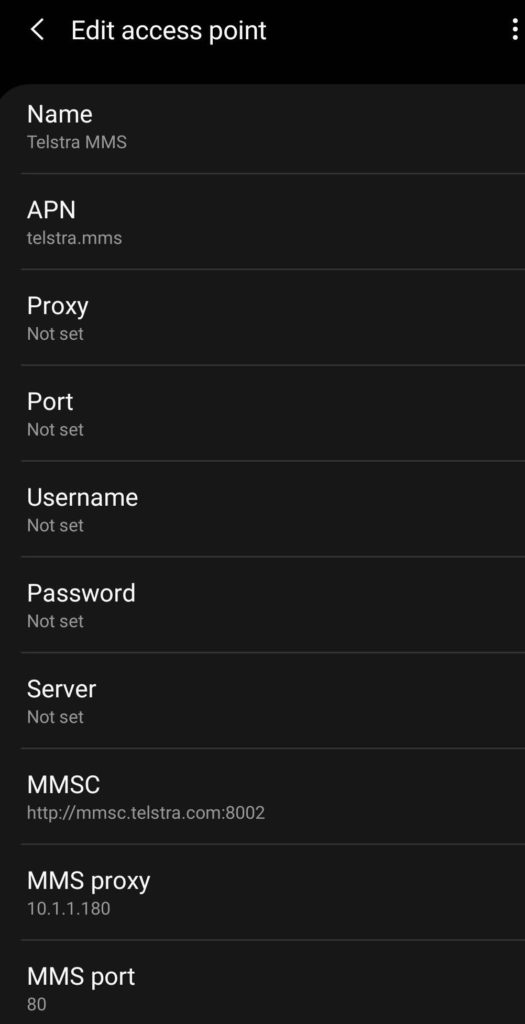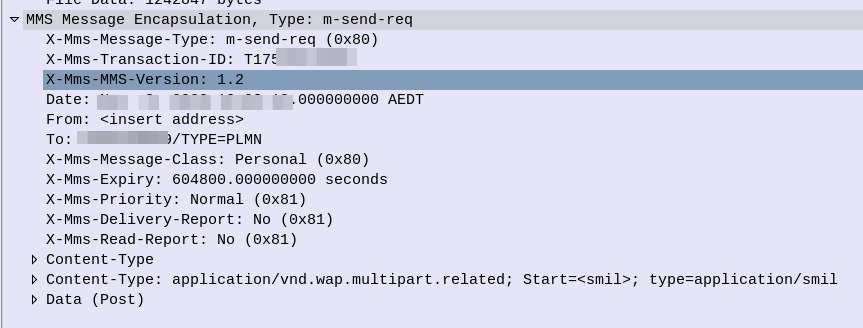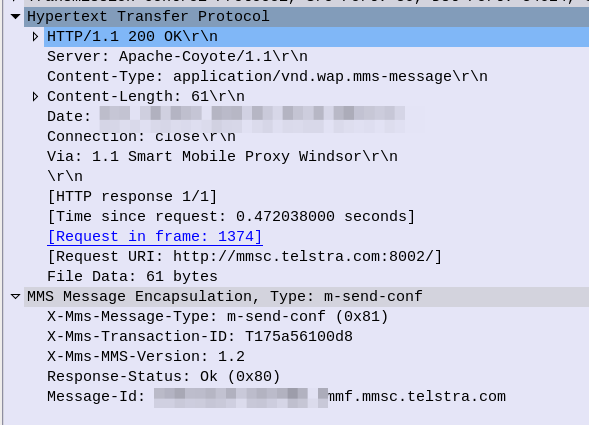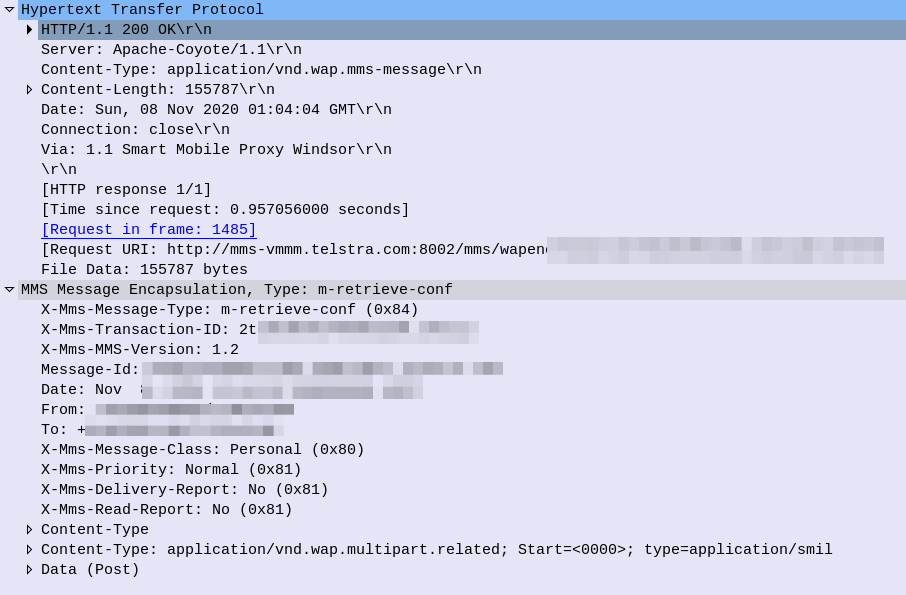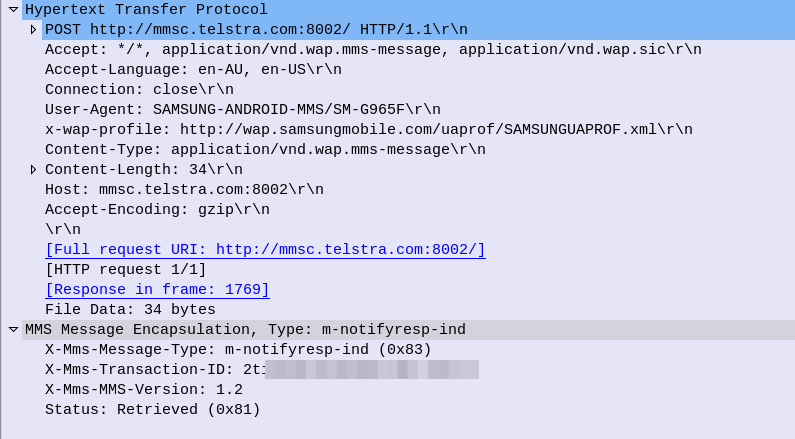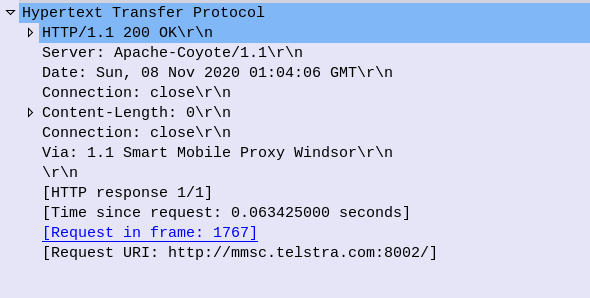In our last post we talked about sending an Multimedia Message, and in this post, we’re going to cover the process of receiving a Multimedia Message.
Carl Sagan once famously said “If you wish to make an apple pie from scratch, you must first invent the universe”, we don’t need to go that far back, but if you want to deliver an MMS to a subscriber, first you must deliver an SMS.
Wait, but we’re talking about MMS right? So why are we talking SMS?
Modern MMS transport relies on HTTP, which is client-server based, the phone / UE is the client, and the MMSc is the Server.
The problem with this client-server relationship, is the client requests things from the server, but the server can’t request things from the client.
This presents a problem when it comes to delivering the MMS – The phone / UE will need to request the MMSc provide it the message to be received, but needs to know there is a message to request in the first place.
So this is where SMS comes in. When the MMSc has a message destined for a Subscriber, it sends the phone/UE an SMS, informing that there is an MMS waiting, and providing the URL the MMS can be retrieved from.
This is typically done by MAP or SMPP, to link the MMSc to the SMSc to allow it to send these messages.
This SMS contains the URL to retrieve the MMS at, once the UE receives this SMS, it knows where to retrieve the MMS.
It can then send an HTTP GET to the URL to retrieve the MMS, and lastly sends an HTTP POST to confirm to the MMSc it retrieved it all OK.
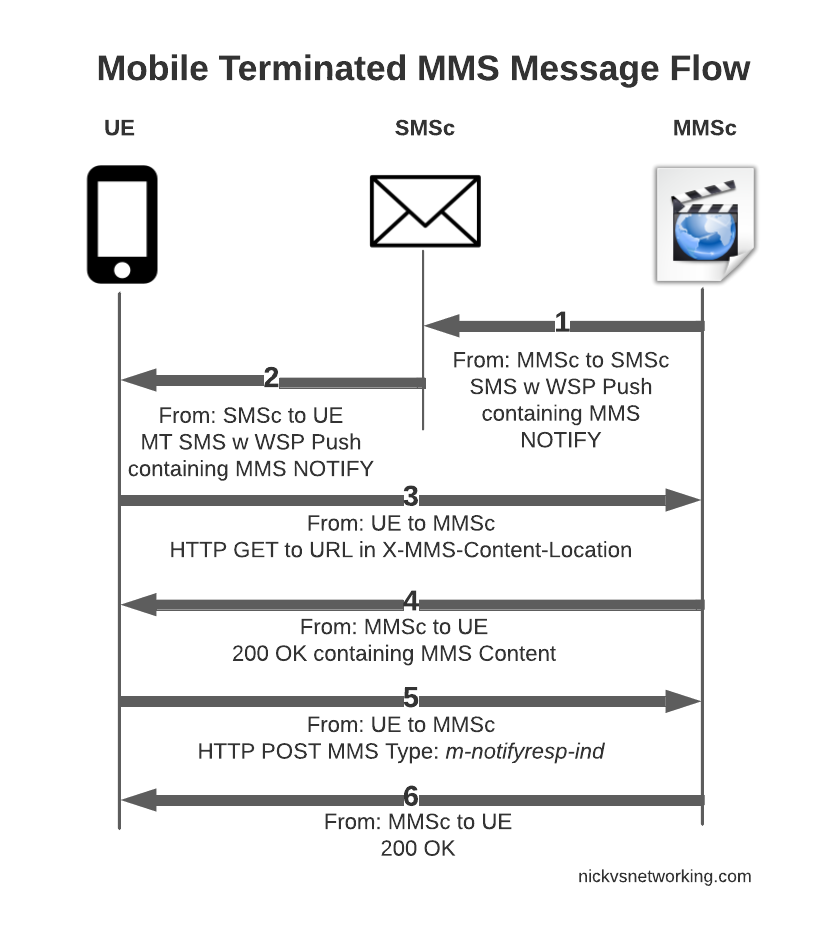
So that’s the basics, let’s look at each part of the dialog in some more detail, starting with this magic SMS to tell the UE where to retrieve the MMS from.
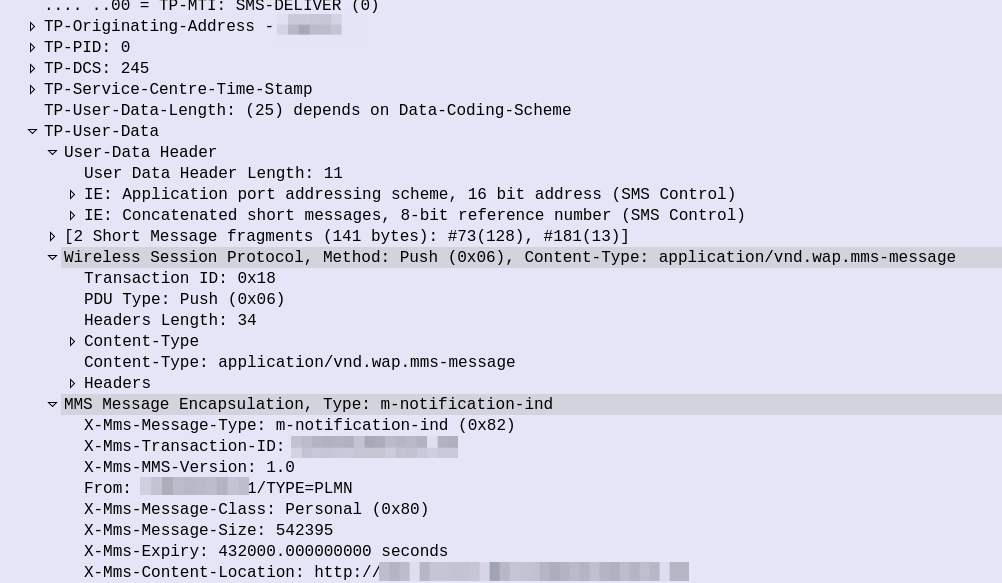
So some things to notice, the user data, which would usually carry the body of our SMS instead contains another protocol, “Wireless Session Protocol” (WSP), and this is the method “Push”.
That in turn is followed by MMS Message Encapsulation, again inside the SMS message body, this time with the MMS specific data.
The From: header contains the sender of the MMS, this is how you can see who the MMS is from, while it’s still downloading.
The expiry indicates to the handset, it it doesn’t download the MMS within the specified time period, it shouldn’t bother, as the message will have expired.
And lastly, and perhaps most importantly, we have the X-MMS-Content-Location header, which tells our subscriber where to download the MMS from.
After this, the UE sends an HTTP GET to the URL in the X-MMS-Content-Location header (typically on the “mms” APN), to retrieve the MMS from the MMSc.
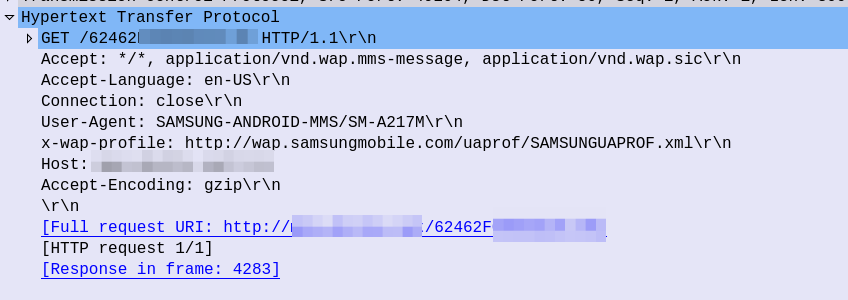
The HTTP GET is pretty normal, there’s the usual MMS headers we talked about in the last post, and we just GET the path provided by the MMSc in the WAP PUSH.
The response from the MMSc contains the actual MMS itself, which is almost a mirror of the sending process (the Data component is unchanged from when the sender sent it).
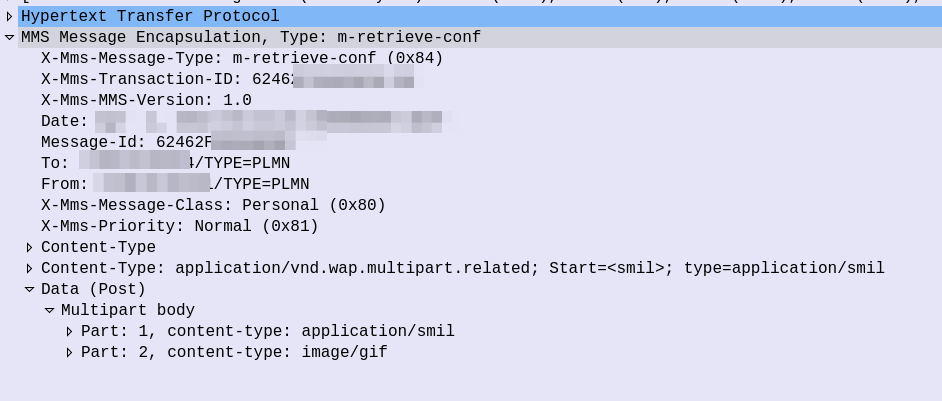
At this stage our subscriber has retrieve the MMS, but may not have retrieved it fully, or may have had an issue retrieving it.
Instead the UE sends an HTTP POST with the MMS-Message-Type m-notifyresp-ind with the transaction ID, to indicate that it has successfully retrieved the MMS, and at this point the MMS can notify the sender if delivery receipts are enabled, and delete the message from the cache.

And finally the MMSc sends back a 200 OK with no body to confirm it got that too.
Some notes on MMS Security
Reading about unauthenticated GET requests, you may be left wondering what security does MMS have, and what stops you from just going through and sending HTTP GET requests to all the possible URL paths to vacuum up all the MMS?
In the standard, nothing!
Typically the MMSc has some layer of security added by the implementer, to ensure the user retrieving the MMS, is the user the MMS is destined for.
Because MMS has no security in the standard, this is typically achieved through Header Enrichment, whereby the P-GW adds a HTTP header with the MSISDN or IMSI of the subscriber, and then the MMSc can evaluate if this subscriber should be able to retrieve that URL.
Another attack vector I played with was sending a SMS based MMS-Notify with a different URL, which if retrieved, would leak the subscriber’s IP, as it would cause the UE to try and get data from that URL.






